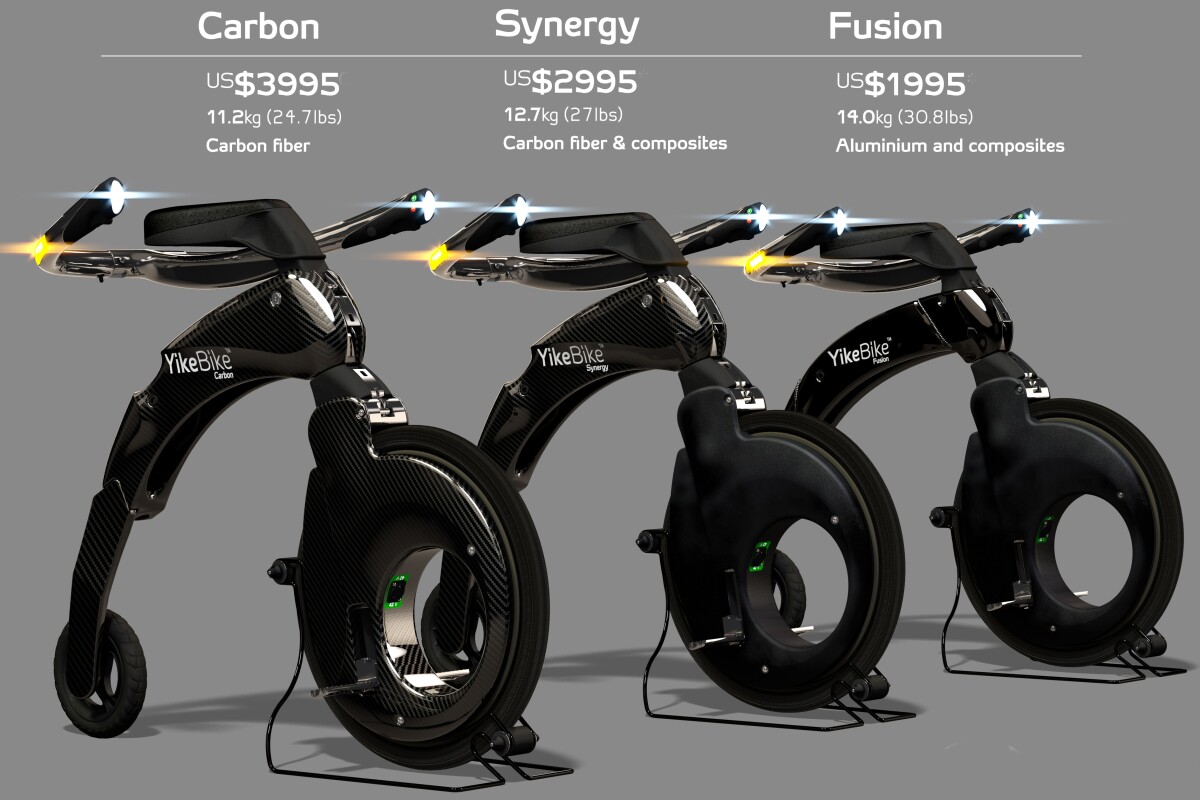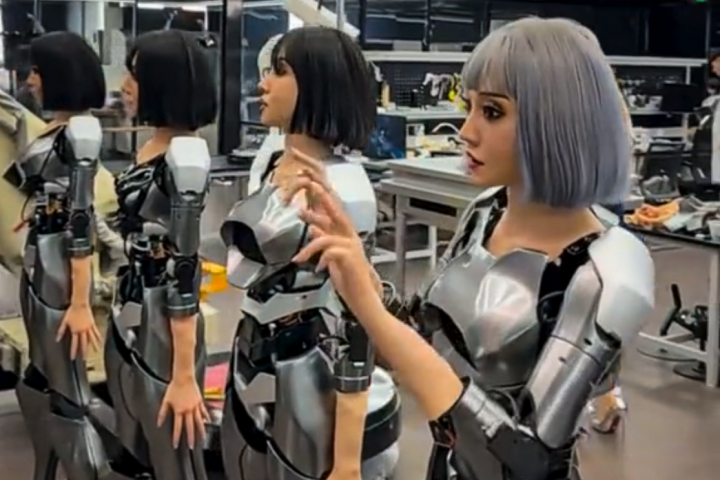Big changes seem inevitable in the global transport infrastructure over the coming decade, with mankind facing significant mobility challenges. The drastic need to conserve energy, reduce emissions, and move efficiently around the cities where more than half of our seven billion citizens live must inevitably lead to significant change.
The realization that current public road infrastructure cannot accommodate everyone having a full-sized car appears to have finally dawned on the governments of the world.
Expanding public urban road infrastructure is very difficult and very costly because new roads need to go where existing public roads or land is available, or above it. Hence, any changes to the transport infrastructure that enable it to become more efficient will need to be made within essentially the same footprint we have now.

A country's transport infrastructure has a direct relationship with a country's economic prosperity – continued improvement and investment is required. Private toll roads are inevitable and private companies can construct such freeways without public funds, and have the users pay for them.
Because building more roads is so costly, the most pressing option is to find ways to improve the efficiency of the roads and though many measures need to be taken to curb congestion and increase flow through, the easiest option is now to reduce the size of the vehicles in which we travel.
The irony is that most people wouldn't miss the extra seats lost in moving to a smaller vehicle.

Most of western society drives a four seat car which rarely has its seats full, yet the whole vehicle needs to be dragged around for its entire lifetime, burning fuel, wasting energy, and adding needlessly to emissions.
The average vehicle occupancy for passenger sedans is 1.59 in America – that is, one driver plus one passenger 60 percent of the time. Two seats would be adequate for most drivers in the vast majority of cases, and the footprint of the car could be halved. Reducing a vehicle's footprint significantly improves its point-to-point times as well as significantly reducing costs.
The size of your vehicle also contributes directly to traffic congestion.
The vitally important Transport Appliance Marketplace

The Transport Appliance market is going to become extremely important because the world's roads are filling up, and threatening to become giant parking lots.
In many developing countries that are getting rich fast, it is becoming increasingly difficult to get around by car because the capital cities are approaching gridlock for large parts of the day.
Developed countries are slowly learning their lessons about the limitations of the automobile and in congested urban areas across the world, governments are now quickly trying to upgrade their public transport infrastructure.
Great effort is going into revamping cycle path networks and congestion charges and paid roads are undoubtedly the way of the future. Congestion taxes are already in place in Stockholm, London, Milan, and Singapore, with many more big cities to come.

Private highways are becoming commonplace with many of the world's most congested cities already featuring tollways – Tokyo, Mexico City, Bangalore, Toronto, Melbourne, Sydney, Beijing, Shanghai, Oslo, Dubai, New York, San Francisco, Santiago, England's M6, and most of Italy's autostradas are already charging on some roads, and the concept of free usage of public roads could be consigned to the history books within a century.
In particular, developing countries without the financial resources or government infrastructure are struggling to cope with the influx of four wheelers resultant from their population's increasing wealth.
There simply isn't enough room on the roads for everyone to have a car and as developing countries head towards prosperity, and everyone wants a car, the issues of pollution, congestion and wasted resources are becoming increasingly counterproductive to personal mobility point-to-point times.
User pays is the ultimate answer – which means if you wish to drive on public roads in the future, you'll most likely pay for the size of your footprint – on the road and in the parking lot.

The race is now amongst the mobility companies (read auto and motorcycle manufacturers) for the missing link – the smallest, lightest man-packable form of transport man can conjure.
We looked at the area of motorized transport smaller than the car in our narrow track vehicles story a few years back and again in our coverage of dual mode transport options a year ago.
The Transport Appliance market will comprise any motorized transport that will take you 2 km to 5 km (1.2 to 3 miles) and can be carried on public transport.

Think of these devices as bridging nodes on the transportation grid.
With Yikebike lowering its weight, and raising the bar yet again, potential entrants of the Transport Appliance Grand Prix have a new target to aim for – 11.2 kg (24.7 lbs).
The miniature foldable electric penny farthing that was released at Eurobike 2009 has been lightened from 11.5 kg (25.4 lbs) to 11.2 kg and now runs 15 km (9.3 miles) on a charge.
Since its launch just over three years ago, the YikeBike has received some quite significant recognition, being ranked 15th among the 50 Best inventions by Time Magazine. It was also listed among the World Intellectual Property Organization's (WIPO) most notable inventions next to the likes of BlackBerry, Google, Magnetic Resonance Imaging (MRI), SpaceShip One, Viagra, and an anti-HIV vaccine – esteemed company indeed.

The YikeBike is also listed in the Guinness Book of World Records as the lightest and smallest compact electric bike in the world. It has now bettered its own record.
The big personal transport companies such as Toyota, Honda, BMW, Nissan, Volkswagen, Suzuki and General Motors are all seeking secondary transport solutions which can be kept inside a car trunk, carried on public transport and used to bridge nodes on the transportation grid and get everyone to their destination as fast as possible.
The multi-modal transportation system of the future
The transportation system of the future is almost certain to be multi-modal – people will use a range of transportation to cross town because doing it all the way in one vehicle will become increasingly less feasible. As we've previously pointed out, the big automakers are recognizing that the car of the future will need to be far more flexible if it is going to continue to play a meaningful role – the full-sized car will not be as significant in the second century of motorized personal transport as it was in the first.
Honda's UNI-CUB

Honda has proposed several small last mile transport solutions designed to be harmoniously mixed on footpaths with people, principally the Honda U3-X and more recently the UNI-CUB Personal Mobility Device. That's the UNI-CUB on the left and its predecessor, the U3-X on the right pictured above.
The UNI-CUB uses Honda's Omni Traction Drive System which we first saw in the U3-X and it has now evolved it so that it is even easier to use. Trials are already underway in Japan and the system promises to give Honda a massive advantage in creating a Honda eco-system that fits within anyone's transport regime.

The UNI-CUB looks to have put on some weight in the model transition, so we're no longer expecting it to be the lightweight device it was as the U3-X and we're now anticipating a weight in the 15-20 kg (33-44 lb) range. That may not matter – the U3-X was designed to be carried, and while on public transport, the UNI-CUB is capable of walking along with you, or following you, so it may not need to be carried.

Honda subsequently showed the Motor Compo – a folding electric mini-bike – at the most recent Tokyo Motor Show, and is probably the best placed of any auto maker to offer a range of vehicle-within-vehicle solutions – in the UNI-CUB and MOTOR-COMPO it now has two such devices. Honda has actually been thinking about the viability of this market for a third of a century – three decades ago, it marketed a tiny two-stroke 50cc fold up scooter as a trunk bike for sub-compact cars.

Honda also has an array of other compatible and viable personal mobility devices including walk-assist and worker-assist devices, the E-Canopy electric three-wheeler and the electric Townwalker. All concepts, but all deployable into the real world at short notice.

Toyota's range of last-mile devices

Toyota, as the world's biggest manufacturer of automobiles, has had an array of prototype devices over the years, initially beginning with walking chairs and wheeled chairs, which are essentially a mix of robotics and small transportation devices.
Toyota's Mobility Division already markets a solution designed for the mobility handicapped, which involves fitting a robotized electric wheelchair inside several of the company's vehicles. Toyota has been working on devices such as this for several years with a view to meeting Japanese Government-specified objectives for enabling mobility for senior citizens and mobility handicapped.

It's easy to see how a larger vehicle could be modified to easily accommodate a smaller, last-mile transportation solution such as this, and you can be equally certain Toyota sees other vehicles docking in this way as part of the long term product development road map.

The Toyota Winglet promises to be one of the lightest solutions available, with the ankle-high version reportedly tipping the scales at under 10 kg (22 lb), and the larger versions which are gripped between the knees or driven with a handle much like an anorexic Segway, running to slightly heavier than 10 kg.
If another Transport Appliance is to slip under Yikebike's 11.2 kg weight, it will probably be the Winglet.

Going up to slightly larger solutions that are smaller than the cars we know right now are Toyota's i-ROAD, which is a development of the series of three-wheeled prototypes which has been evolving for almost a decade, first as the i-SWING in 2005 (above), then as the i-UNIT in 2006, then the i-REAL which I first drove at the 2007 Tokyo Motor Show and then as a subsequent development which the company again allowed me to drive at the 2009 Tokyo Motor Show.
The i-ROAD is essentially a tilting fully-enclosed electric motorcycle and Toyota looks set to offer comfort and weather protection and stability to the two-wheeler as it broadens its mobility portfolio to offer solutions to all human beings – not just those who can afford cars.
Between the i-ROAD and the Winglet, Toyota appears to have most eventualities covered. Suzuki's Pixy

Suzuki looked at the idea six years ago when it showed the Pixy and SSC concepts. The Pixy fitted inside the SSC and there was also a boat version – the concept of one man transportation capsules docking into larger capsules and then still larger capsules is an interesting and efficient way of mixing short and long term transportation nodes. It is also a feature of General Motors' longer term strategy.
General Motors Flextreme and EN-V concepts

General Motors originally looked to use the Segway in this vehicle-in-vehicle role, when it showed the Flextreme Concept five years ago, but interestingly, the development relationship with Segway didn't go as planned and spawned the EN-V concept, and the potential for Segway's self balancing platform to play a major role in the evolution of dual-mode transport is obvious as it blends particularly well with foot traffic in airports, shopping malls and footpaths all over the world already.

The EN-V concept, which General Motors proposed at the World Expo 2010 in Shanghai, was designed to have a small footprint, platoon, drive itself, park itself, act as a chauffeur, use minuscule amounts of power, never have an accident … and I had the opportunity to drive the device a few years back and it's still one of my all-time favorite vehicles.
The ingenuity of the EN-V still astounds me – it is a vision of the transportation system of the future which sadly is not likely to happen now that the subsequent version has grown an extra set of wheels.
Volkswagen's Bik.e

Volkswagen's Bik.e concept shown in China two years ago was a folding electric bike that stows away in the same wheel-well as the spare tire. It also has one of the most ingenious folding mechanisms we've seen. With a range of 20 km (12.4 miles) and a weight under 20 kg (44 lb), VW's choice of form factor is as fascinating as its choice of a recognizable name is inspired. The bike could become a killer app as important to VW as the iPod was to Apple.
Volkswagen has also bolstered its stocks in this area with the recent acquisition of motorcycle manufacturer Ducati by Audi (a VW subsidiary) while BMW and Honda are also obviously well advanced with futuristic electric two-wheelers that get smaller and more frugal with each prototype.
BMW's his and hers electric scooters

BMW's new sub-brand i recently showed the i8 electric sportscar and in the rear were his and hers electric scooters, yet another variation on this last-mile transport theme, and one which BMW is keeping a veil of secrecy over. Very little information has been released on the new scooters despite them being retained as a key feature of the new i series flagship model.
Nissan's self-balancing skis

Nissan has some Segway-like skis under development in Japan, and although very little information has leaked about these devices, they have been seen in several different guises, one with the two footboards joined together, and others where they have been separate, like skis.
Each balances on two wheels with a ski-pole-like handlebar to help the user maintain balance while in motion and a motor to drive the device at around 5 km/h (3 mph).
When joined together, tilt sensors inside the footboards detect the user’s shift in weight to turn. Sensors can also detect nearby obstacles allowing the possibility of the device being used to carry luggage that follows its owner around.

Solutions such as the i-ROAD, General Motors' EN-V and Nissan's Land Glider address the obvious need for broader ranging transportation solutions that need to have a much smaller footprint than the car. Parking costs are also set to play a major role in personal transportation in the future, with land in cities becoming increasingly valuable, so having a smaller footprint will mean less parking costs.
The Yikebike still leads the pack

The most promising of all of these new transportation devices though, is already on the market and getting better all the time.
Gizmag's Editor-in-chief Noel McKeegan and I have both ridden the Yikebike and can vouch that it is easy to learn, will transport you 10 km (6.2 miles) in under half an hour and, most importantly, is very easily carried.
Our vote for the runner-up of those machines currently available is Karbon Kinetics' $4,200 GoCycle G2, which weighs in at just 15.6 kg (34 lb), and has a range of up to 64 km (40 miles). Throw in the ease of use that comes from familiarity with the form factor, three gears and it's a compelling proposition.

Its major downsides in comparison to the Yikebike are the weight, and its final folded size of 600 x 760 x 300 (23.6 x 29.9 x 11.8 in), considerably larger than the Yikebike's 170 x 690 x 570 mm ( 6.7 x 27 x 22.4 in) – both major factors in carrying the devices on public transport.
Other GoCycle upsides beyond that awesome range is that it won't leave you stranded if it runs out of herbs because it behaves just like a bicycle and can be ridden as such, so you can pedal it home. Finally, the integrated lock means you can chain it up easily, whereas the Yikebike would require a separate chain to be carried.
In most other respects, it's similar – folding is only marginally more difficult or time-consuming, and the difference in cost is marginal too, depending on how you view it.

There are now three YikeBike models:
- YikeBike Carbon – completely carbon fiber, weighs 11.2 kg (24.7 lb). U.S Price: $3,995;
If you're built like Tarzan, carrying the extra 4.4 kg (9.7 lb) of the $4,200 GoCycle won't be an issue. If you're built like Jane, it might be, and that's why the 11.2 kg Carbon Yikebike costs twice as much 14 kg Fusion Model – exactly the same performance, just 2.8 kg (6.2 lb) lighter than the Fusion and, most importantly, the Yikebike is much smaller and more manageable than the GoCycle or anything on the market.

Both of the key contenders are the brainchild of extraordinary human beings – the Yikebike was designed in New Zealand by Grant Ryan, a serial entrepreneur with four successful start-ups under his belt, while the Karbon Kinetics GoCycle is the concept of former F1 designer Richard Thorpe, a designer who pushes the limits of modern manufacturing.
In line with the announcement of a three-tier Yikebike regime, Yikebike's inventor Grant Ryan spoke with Gizmag.
"You haven't heard much from us in the last two years because we've been production constrained. We doubled production last year and will again double our production numbers this year, admittedly off a small base, but we're very happy with the way we've developed the product over that time.
"This latest development, which adds a 50 percent improvement in the range of the bike and makes it significantly more usable. It's only a pound lighter – half a kilogram – but it is noticeably lighter to carry onto public transport – a ferry, bus, train, or lift into the trunk of your car.
"Adding another model half way between the super light and expensive carbon finer model and the aluminum Fusion model, also extends the appeal of the product to more people.
"We were very conscious of the price of the Yikebike when we first started, but as the electric bike market has gone quickly upmarket, the Yikebike is now quite modestly priced in comparison to most electric bikes coming onto the market, to the Segway and to all of the competitors in this space.
"Our biggest issue remains that of perception – people take a while to get over that mental leap of just how difficult the Yikebike looks to ride and we're beginning to address that by producing a range of videos showing the average person in the street hopping on the Yikebike for the first time and their experience.
"Interestingly, if you look back in history 120 years, the transition from the Penny Farthing bicycle to the safety bicycle played out almost exactly the same way – but in reverse. When people have it in their mind that there's a standard way of doing things, an alternative looks funny, even if it is a better mousetrap.
"That reticence of the public to snap up new ideas is the reason why new technology is quite often slow to take off and people often overestimate what will happen in the short term and underestimate what happens in the longer term. Momentum needs to gather.
"All assembly for the Yikebike is still done in New Zealand, with parts manufactured around the world and shipped or flown to New Zealand for final assembly and quality assurance.
"To be truthful, the reason it is being finished here is so we can monitor and refine the process. Our goal is to produce a very high end unit so we're fastidious about our quality control and we find that at least for now, we need to keep a tight rein on that and we are reaping the benefits of continually refining the process and the product with a dedicated team.
"We've made quite literally hundreds of minor changes to the models as we've learned the best way to make it more stable, so that it folds better and feels good to fold, and so that it is more reliable and ultimately, a much better product."
Given the remoteness of New Zealand and the high wages there, I asked Grant if there were any plans to relocate production once the refinement process was finished to his satisfaction.
"It's something we may consider, but probably not in the short term and maybe not at all.
"If we want to have a super cheap mass-production version, we would license it to another manufacturer and that's a possibility, but we have a vision that we'll be the equivalent of Audi in this new class of vehicle – something you are proud to ride and own, a genuine technological enhancement to your lifestyle
"I also expect the market and parts supply situation will change too, and in the longer term, the Yikebike is essentially the same technology as the pushbike and the power tool, so we expect to be able to produce it very inexpensively as time goes by and better batteries and motors and materials become more commercially viable."
The Yikebike and the GoCycle define the Transport Appliance market at present – both modern day interpretations of the original bicycle but vastly different in almost every respect.
In between, there will be many other concepts. I think around 20 kg (44 lbs) is the limit one can reasonably expect the average human being and maybe 15 kg (33 lbs) for a smaller female, putting the Gocycle right on the limit.
Which prototypes do you think will make it to production, and why?
























































































































































